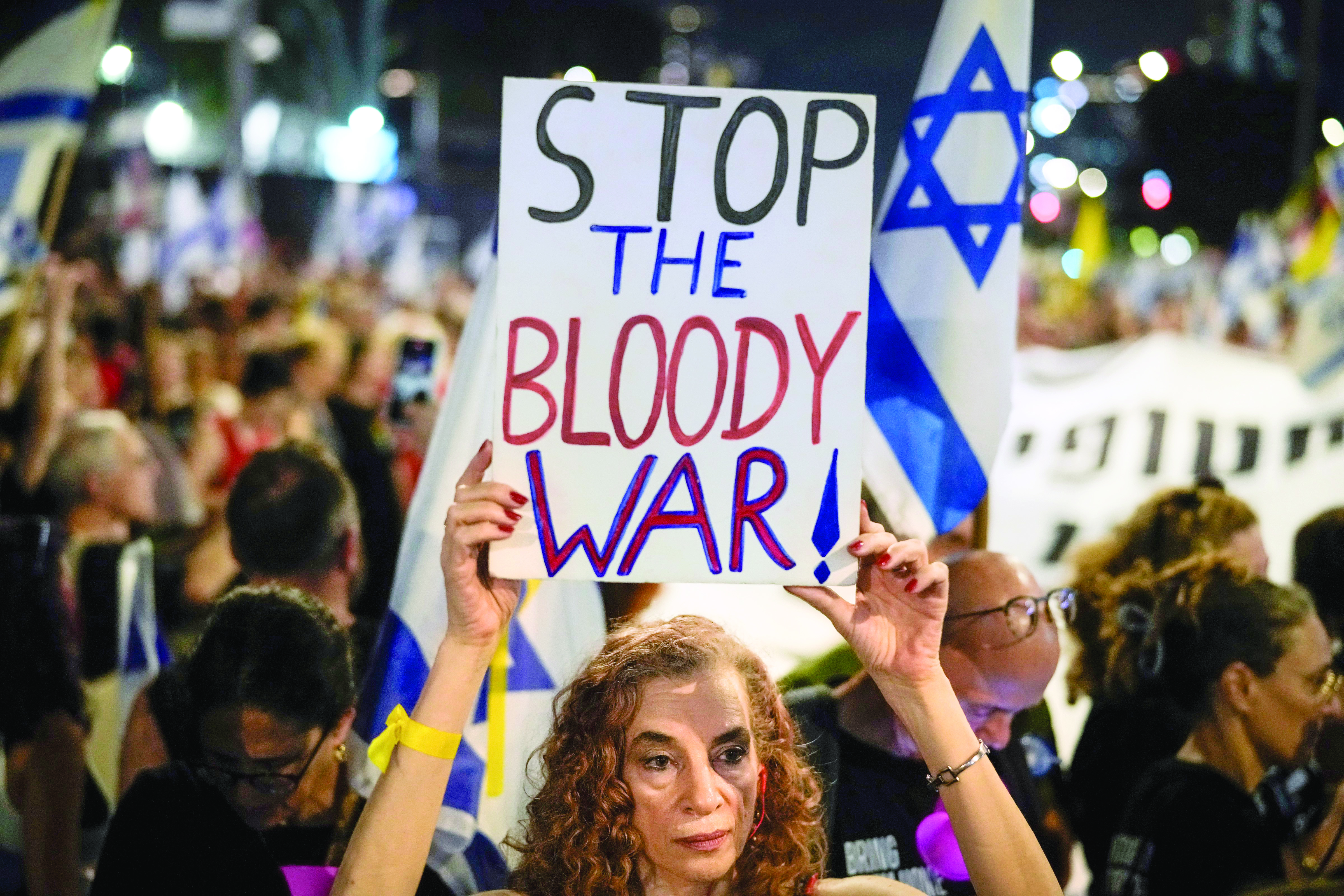‘Where will we go’, say residents as Israel deepens its operation in Gaza City

Deir-Al-Balah (Gaza Strip): Israeli forces intensified their operations in the Gaza Strip’s largest city on Monday, aiming to root out militants in an offensive that has displaced thousands of Palestinians. The move is part of an ongoing nine-month conflict that has left the region in ruins.
The latest incursion targeted the eastern part of Gaza City, broadening Israel’s efforts in the northern regions of the embattled territory. Although Israel had claimed control of this area months ago, militant activity has persisted, undermining previous military gains and necessitating renewed operations. The Israeli military had previously ordered evacuations in the area, anticipating the raid.
Heavy fighting in the initial stages of the war had already forced most residents to flee Gaza City and its surroundings. The Israeli military has since restricted the return of displaced individuals. However, hundreds of thousands of Palestinians remain, living in damaged homes or makeshift shelters. The renewed clashes have caused further displacement among these residents. “We fled in the darkness amid heavy strikes,” said Sayeda Abdel-Baki, a mother of three, now seeking refuge at her relatives’ home in the Daraj neighbourhood. “This is my fifth displacement.”
Residents reported artillery and tank fire, as well as airstrikes. The Gaza Health Ministry, with limited access to northern Gaza, did not immediately report casualties. The Hamas-run Civil Defense also withheld casualty figures, citing the inaccessibility of the area due to ongoing fighting.
“The enemy is behind us and the sea is in front of us, where will we go?” said Abdel-Ghani, a Gaza City resident who withheld his full name. “Tank shells and missiles are falling on the roads and houses like hell from a volcano. People are running in all directions and no one knows where to go,” Abdel-Ghani said.
Despite the escalating violence, Israel and Hamas appeared closer than in months to a potential ceasefire deal, which would include a pause in the conflict in exchange for the release of Israeli hostages held by Hamas. However, significant hurdles remain, even after Hamas dropped its demand for an end to the war as part of the agreement. Hamas now seeks guarantees from mediators—the United States, Qatar, and Egypt—that negotiations will lead to a permanent ceasefire. This point could prove contentious for Israel, which has consistently rejected any deal that would end the conflict with Hamas still intact, as reiterated by Israeli Prime Minister Benjamin Netanyahu on Sunday.
Another point of contention is whether Hamas will be allowed to select high-profile prisoners held by Israel for release as part of the deal. Some of these prisoners have been convicted of severe crimes against Israelis, and Israel opposes granting Hamas such selection power.
While diplomatic efforts continue, the people of Gaza see no end to their suffering. Residents fleeing eastern Gaza neighbourhoods reported heavy strikes on Monday, causing panic and prompting those in areas not under evacuation orders to seek refuge.
Maha Mahfouz, along with her two children and many neighbours, fled their home in Gaza City’s Zaytoun neighbourhood. Although their area was not included in evacuation orders, the proximity of bombing and gunfire caused widespread panic.
Fadel Naeem, director of Al-Ahli Hospital, noted that patients and their companions fled the facility in panic, even though there was no specific evacuation order for the area. He said critically ill patients were evacuated to other hospitals in northern Gaza.
The Israeli military justified the operation, citing intelligence indicating that militants from Hamas and Islamic Jihad, along with weapons and detention facilities, were present in the area. The military also claimed that a facility belonging to the United Nations Relief and Works Agency for Palestine Refugees (UNRWA) was being used by militants, though no evidence was provided.
Mahmoud Bassal, a spokesperson for the Hamas-linked Civil Defense Department, said intense Israeli bombing made neighbourhoods like Tufah, Daraj, and Shijaiyah inaccessible. He reported that the Israeli military shelled residential houses in the Jaffa area of Gaza City and that first responders were unable to retrieve casualties due to the ongoing bombing.
The war, which erupted following a surprise cross-border raid by Hamas on October 7, has claimed over 38,000 lives in Gaza, according to the Gaza Health Ministry. The conflict has devastated much of Gaza’s urban landscape, created a humanitarian crisis, and displaced most of the territory’s 2.3 million residents. The initial attack by Hamas killed 1,200 people in southern Israel, primarily civilians, and resulted in the taking of approximately 250 hostages, about 120 of whom remain in captivity, with roughly a third believed to be dead.



